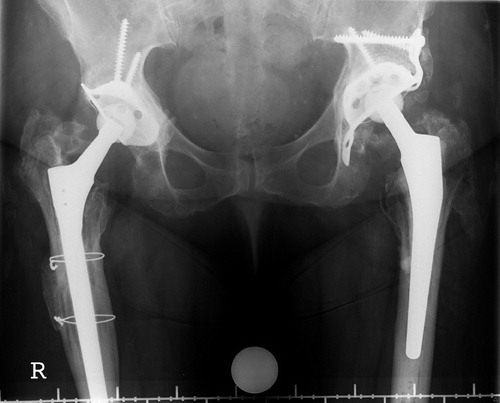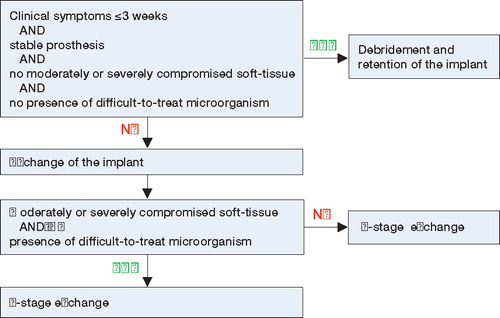Figures & data
Figure 2. Flow of hips included in the study. Exclusion of 19 of 91 hips that did not fulfill the inclusion criteria.

Table 1. Patient characteristics prior to the index operation
Figure 3. A 59-year-old woman with bilateral PI following Staphylococcus aureus sepsis, 2 years after bilateral 1-stage exchange. On the right side: reconstruction with a Müller reinforcement ring for a type-1 defect, and a long Wagner stem by transfemoral approach. On the left side: a reconstruction with a Burch-Schneider ring to bridge a type-2B defect. A cemented Virtec stem with transgluteal approach was implanted. At the 2-year follow-up, the HHS (bilateral) was 97, there was a slight limp, there were no radiographic signs of loosening, the transfemoral osteotomy was healed, and the infection was cured.

Table 2. Surgical procedures and specifics at the index operation
Table 3. Infectiological, functional, and radiographic outcome, and number of revisions
Table 4. Number of complications associated with the index operation

